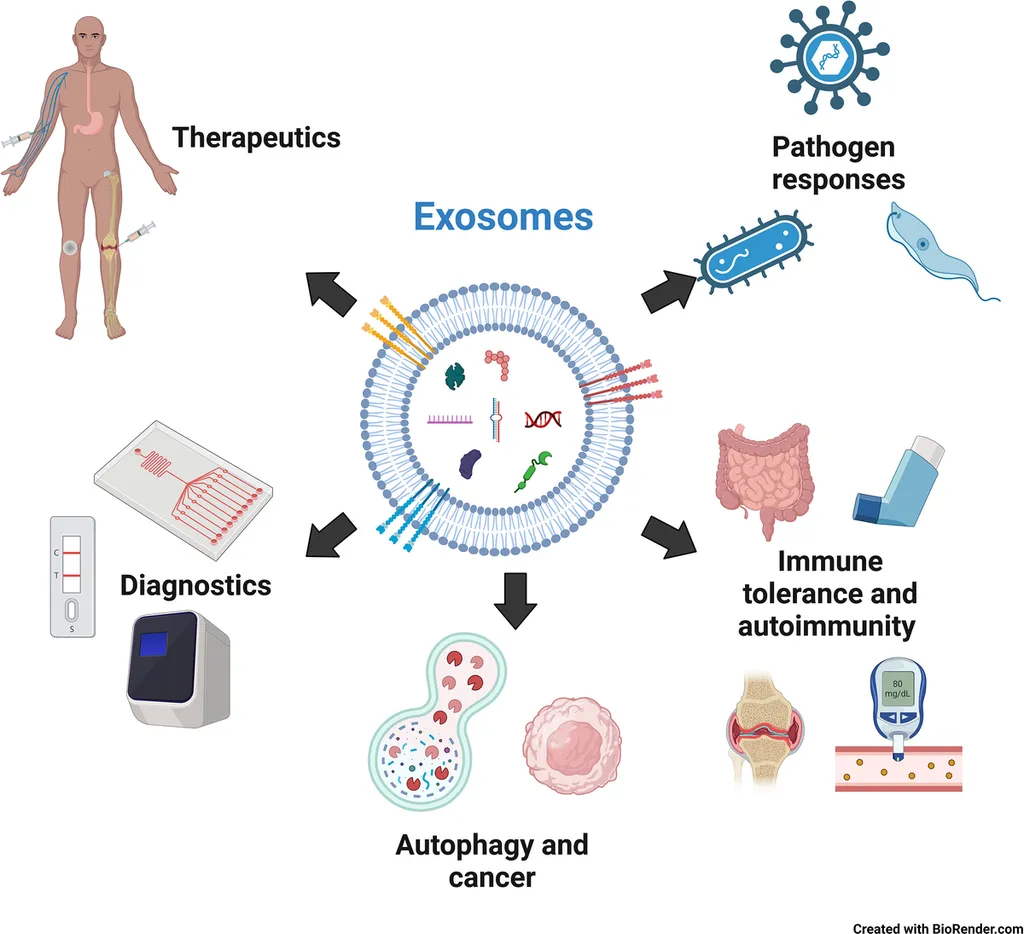In the bustling world of biomedical research, a tiny yet mighty player is stepping into the spotlight: exosomes. These microscopic vesicles, secreted by cells, are proving to be more than just cellular waste; they’re emerging as powerful tools in targeted therapy and diagnostics. A recent review published in *Materials Today Advances* (translated to English as *Advances in Materials Today*), led by Emrah Dikici from the Scientific and Technological Application and Research Centre at Aksaray University in Türkiye, sheds light on the current state and future potential of these extracellular vesicles.
Exosomes are like nature’s delivery drones, ferrying a cargo of nucleic acids, proteins, and lipids between cells. “Their intricate composition makes them versatile players in a myriad of biological processes,” Dikici explains. From regulating gene expression to modulating inflammation and immunity, exosomes are involved in a wide array of cellular communications. But their potential doesn’t stop at natural processes. When engineered, these vesicles can be transformed into highly effective delivery systems for therapeutic agents, enabling targeted administration to specific organs, tissues, and cells.
The review highlights state-of-the-art characterization and isolation techniques, crucial for harnessing exosomes’ potential in biomedical applications. One of the most exciting prospects is personalized treatment. Imagine a future where therapies are tailored to an individual’s unique biological makeup, minimizing side effects and maximizing efficacy. Exosomes could make this a reality by delivering drugs directly to the cells that need them.
But the journey isn’t without challenges. Dikici points out the need to better understand exosome interactions with other nanostructures, particularly focusing on the biomolecule corona—a complex layer that forms on the surface of nanoparticles when they come into contact with biological fluids. This layer can significantly influence the behavior and fate of exosomes in the body, posing both opportunities and obstacles.
The energy sector, too, might find unexpected allies in exosomes. As research progresses, these vesicles could play a role in developing targeted therapies for energy-related health issues, such as cardiovascular diseases linked to environmental factors. Moreover, the advanced characterization techniques discussed in the review could inspire innovations in energy materials, where precise control over nanostructures is paramount.
As we stand on the brink of a new era in biomedical research, exosomes are poised to take center stage. With their unique properties and vast potential, they could revolutionize the way we approach therapy and diagnostics. Dikici’s review serves as a comprehensive guide to the current landscape, offering insights into the opportunities, limitations, and future perspectives of exosome-based applications. As the scientific community delves deeper into this fascinating field, one thing is clear: exosomes are no longer just a footnote in cellular biology—they’re a game-changer.

